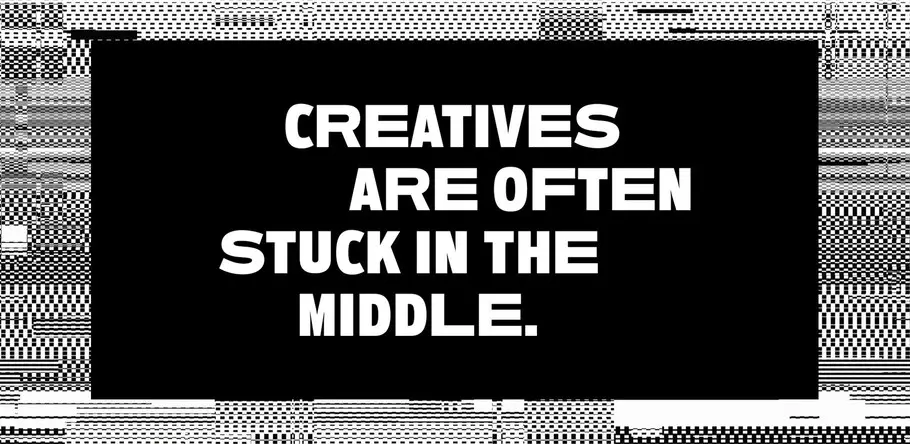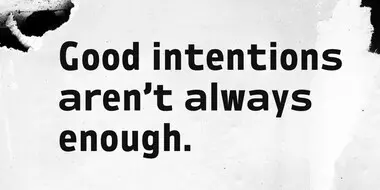How understanding font licenses can simplify creative's lives.

Graphic designers and other creative team members are the primary users of the fonts a company licenses, but licensing approval typically runs through other departments. Instead of easily and seamlessly licensing the fonts they need, creatives often need to stop what they’re doing—which costs time, jeopardizes deadlines, and disrupts the creative process—to advocate for the proper licensing of quality fonts.
That’s a lot of pressure, especially when using the wrong font can lead to expensive fixes. It often falls on the designer to make sure this doesn’t happen, which is an increasingly difficult task considering designers are working in more contexts than ever before.
If you’re a creative professional feeling the font pinch, it can help to know a bit about licensing so you can do what’s best for you and your brand. Here are a few key concepts all designers should understand.
Licensing can be a project killer
Different fonts are engineered and optimized for different use cases, and each of these use cases comes with its own license structure. You need to know which font goes where, and make sure the fonts you’re using are approved for whatever you’re creating.
The process of sifting through folders of fonts, emailing colleagues, and triple-checking file names can eat up valuable time you’d rather spend designing: A recent survey of creatives found that 48 percent spend 8 hours or more per week on administrative (that is, non-creative) tasks. That assumes your organization has licensed the font you need; if it hasn’t, you’ll need to get it, which involves more waiting and more lost time. You may even be using a free font that—surprise!—doesn’t work where you need it to and needs to be retroactively licensed.
Now, what if you get it wrong?
Best case scenario: You’re in the mock-up phase, realize the wrong font was used, and have to start over. This costs time (and might drive you a bit crazy), messes with deadlines and schedules, and can result in substantial changes to the work itself.
Still, that’s better than realizing you used the wrong font after the project goes live. During the mock-up phase, the damage is mostly contained within the creative team. Once a project goes live, however, you’ll likely need to coordinate with the broader marketing group to pull down anything using the incorrect font. This not only wastes time but potentially interrupts active campaigns, leading to a loss in revenue or ROI, and risks an infringement situation.
In most of these cases, the incorrect usage is an honest mistake stemming from confusion over which font to use, or an oversight while trying to hit a tight deadline. But accident or not, the consequences can be substantial.
By artists, for artists (and the brand)
These days it’s easy to assume fonts magically materialize out of the ether. The proliferation of websites offering low-quality free fonts or pirated knock-off versions of existing designs has turned fonts into something of a commodity—even an afterthought. Most designers have heard the words, “just get something free” at some point in their career, and indeed many non-creatives don’t see the point in paying for fonts anymore.
But designers also know that fonts are not all created equal. That knock-off font may look decent enough, but how legible will it be on a small, low-res screen? Will it look crisp and clean blown up and printed on a subway ad, or read well on a shopping bag? Does it have a broad enough glyph set to support all your needs?
When you license fonts from reputable, established designers and foundries, you know a lot of time and consideration went into the design. Type designers understand the needs of graphic designers and brands alike, and create fonts that are both beautiful and highly functional across every touchpoint in a brand’s portfolio. Features such as optical sizing and robust OpenType options can substantially expand the versatility of a font, and in turn elevate a brand’s visual identity and user experience, particularly on mobile.
Quality counts behind the scenes, too. The Monotype Studio, for example, employs a team of font engineers whose job is to make sure the fonts work smoothly in all situations. Fonts are software, after all, so they need to be reliable and thoroughly tested prior to release, but low-quality free fonts don’t always get this treatment. They’re more vulnerable to breaking and sometimes even carry malicious code. For brands, especially brands with wide-ranging digital properties, that sort of breakdown could be catastrophic.
Creatives also understand that fonts don’t magically appear on their own. Somewhere, a real, live human being sat down and drew those glyphs, one at a time, over several months or more. Paying for fonts means type designers can earn a living and continue creating the beautiful, reliable designs you love to use.
A thoughtful solution
At many companies, fonts are stored and shared within a loose structure at best. File names aren’t always clear, permissions are often a guess, and communication around which license should be used in which location is an ad hoc adventure. This is how creatives end up in the situations described above—wasting hours each week rifling through font files, hopefully choosing the right ones, and scrambling when it turns out they didn’t.
When we created Monotype Fonts, we set out to build a sophisticated solution that not only allows creatives to choose and use the fonts that are best for their projects, but also empowers companies to organize their fonts the way you’d organize any cluttered space: In a single, central location with clear labels, customizable groupings, and the ability to determine which team members can access which fonts. (Your IT and procurement teams will love this.)
A system like this allows you to focus on what you actually want to do: Design. From finding the exact font you need all the way through deployment and management, Monotype Fonts eliminates a lot of the complications creatives often face when working with type. With unlimited desktop rights to our library of over 250,000 fonts, teams have immediate access to the complete character set of every typeface. If you find a style you like, you can begin prototyping with one click. When you’ve finalized your design, sharing files and licensing are a breeze.
The key phrase here, however, is peace of mind. For your legal department, a system like this almost entirely eliminates the risk of improper usage or the dreaded infringement case. If you have a procurement team, they’ll rest easy knowing they have visibility into who is using the companies fonts. Your IT department will be happy too, feeling reasonably sure there are no hidden security risks just waiting to be exposed.
Peace of mind applies to your team as well. Creatives are on the hook for using fonts correctly, and a well-organized system takes most of the guesswork out of that task. In this case, what’s good for you is good for the brand—using better fonts leads to stronger (and more enjoyable) designs, and thoughtful licensing gives you the freedom to explore new ideas without worry.
To learn more about how Monotype Fonts can help take the guesswork out of font licensing, drop us a line and we’ll get in touch.













